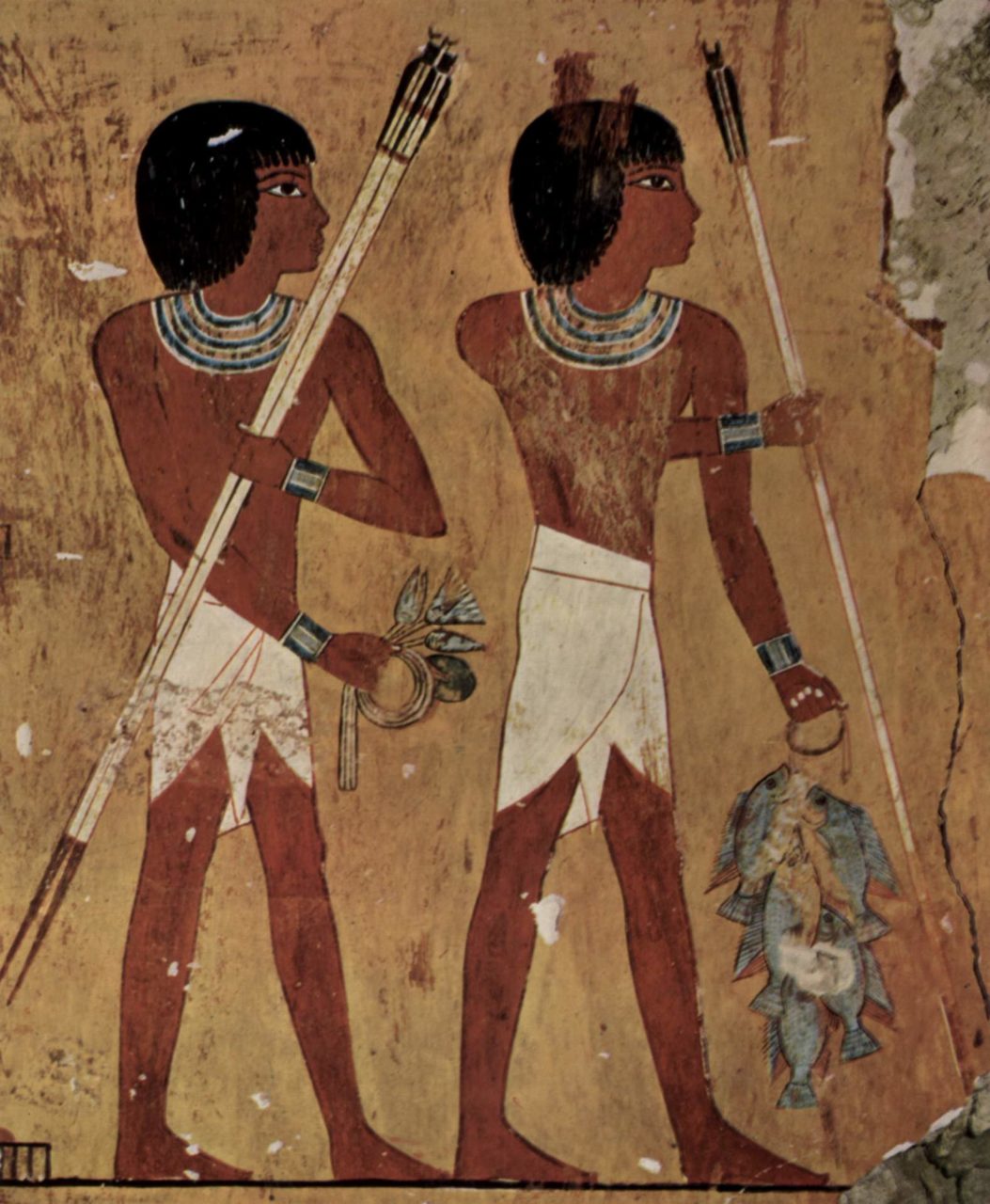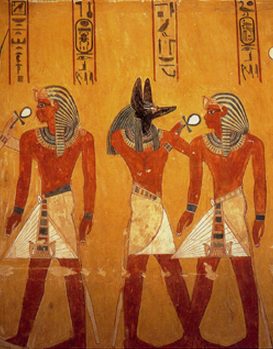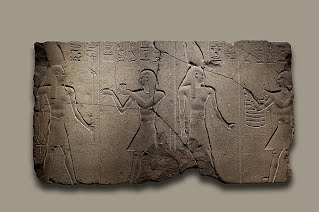An ancient Egyptian wrap skirt worn by men.
The Details
According to Bronwyn Cosgrove in The Complete History of Costume & Fashion: From Ancient Egypt to the Present Day (2000), in Egypt:
“The traditional male garment was the schenti. A simple kilt, it was wrapped around the hips with the ends hanging down in folds at the front of the body. Initially made of leather or hide, it was later constructed of a light cloth, usually linen. Pharaohs are sometimes shown with a loin’s tail hanging down at the back of their kilt, while soldiers sometimes wore a kilt that was striped or cut from colored cloth.” (17)
According to A History of Fashion (1980):
“The oldest male garment was the simple loin-cloth or schenti, which consisted of a single strip of linen wrapped round the hips. It was adopted by all classes, although the material used by the pharaohs, we are told, was much finer and often pleated. There were various methods of folding this garment, the most common being that employed today in India and parts of Africa with the material passing diagonally across the hips with one end tucked in at the waist and the other hanging free at the front. This garment was worn with a bare torso regardless of social status.” (Black 23)
Fig. 1 - Artist unknown. Burial chamber of Ken-Amun, chief steward of the king, 1448-1422 BCE. Mural; 80 x 70 cm (32.7 x 27.6 in). Luxor/Thebes: Valley of the Kings. Source: Wikimedia
Fig. 2 - Artist unknown. Tomb of Thutmose IV. Vestibule, Dynasty 18, Thutmose IV, 1397-1387 BC. Luxor/Thebes: Valley of the Kings. Source: Pinterest
Fig. 3 - Nina de Garis Davies (1881–1965). Funeral Procession, Tomb of Pairy, ca. 1390–1352 B.C.. Tempera on paper; 48.5 x 192 cm (19 1/8 x 75 9/16 in). New York: The Metropolitan Museum of Art, 35.101.3. Rogers Fund, 1935. Source: The Met
F
ashion, Costume, and Culture: Clothing, Headwear, Body Decorations, and Footwear through the Ages (2004) also describes the schenti at some length:
“The schenti, or kilt, was the basic garment of the Egyptian nobleman, or upper class, from the earliest days of the Old Kingdom(c. 2700–c. 2000 B.C.E.) all the way through the New Kingdom (c. 1500–c. 750 B.C.E.). At its most basic, the schenti was a rectangular piece of cloth, wrapped around the hips and held in place by tucking one end into the tightly wrapped waist or by wearing a tied belt. Evidence of the schenti comes from the many hieroglyphs, or picture drawings, that appear in the well-preserved tombs of Egyptian nobles.
It is believed that the first schenti were made of leather or animal hides, but soon linen became the preferred fabric. Linen was made from a flax plant and was produced by a well-developed weaving industry. It was a light fabric, comfortable in the hot weather of Egypt, and it was easy to starch, or stiffen, into the pleats or folds that were favored during the Middle Kingdom (c. 2000–c. 1500 B.C.E.) and the New Kingdom.
The basic form of the schenti remained remarkably the same throughout the over two-thousand-year history of ancient Egypt. There were, however, many variations in this basic form. The first innovation in the schenti was a curved cut made at one end of the rectangular fabric, which then appeared in the front of the garment when that end was tucked into the belt. These front decorations grew more elaborate, with fringe appearing in one Old Kingdom example and vertical pleats adorning other examples. By the time of the Middle Kingdom, schenti had grown slightly longer, reaching to just below the knee. Another addition was a triangular apron that hung down the front of the schenti. The apron looked like a pyramid, with the pointy tip at the waistline and the flat base at the knee. This apron was often starched, sometimes in such a way that it projected out in front of the wearer. During the Middle Kingdom and the New Kingdom, many hieroglyphs show men wearing a longer, transparent skirt over the top of their schenti. Sometimes these skirts hung all the way to the ankles and, in some cases, were starched and pleated.”
Fig. 4 - Artist unknown. Nectanebo II Offers to Osiris Hemag, 360–343 B.C.. Granodiorite; 93.2 × 170.8 cm (36 11/16 × 67 1/4 in). New York: The Metropolitan Museum of Art, 12.182.4c. Rogers Fund, 1912. Source: The Metropolitan Museum of Art
References:
- Black, J. Anderson, Madge Garland, and Frances Kennett. A History of Fashion. New York: Morrow, 1980. http://www.worldcat.org/oclc/929912599.
-
Cosgrave, Bronwyn. The Complete History of Costume & Fashion: From Ancient Egypt to the Present Day. New York: Checkmark Books, 2000. http://www.worldcat.org/oclc/925279376.
- “Schenti.” In Fashion, Costume, and Culture: Clothing, Headwear, Body Decorations, and Footwear through the Ages, edited by Sara Pendergast and Tom Pendergast, 28-29. Vol. 1, The Ancient World. Detroit: UXL, 2004. Gale Virtual Reference Library (accessed September 18, 2017).














